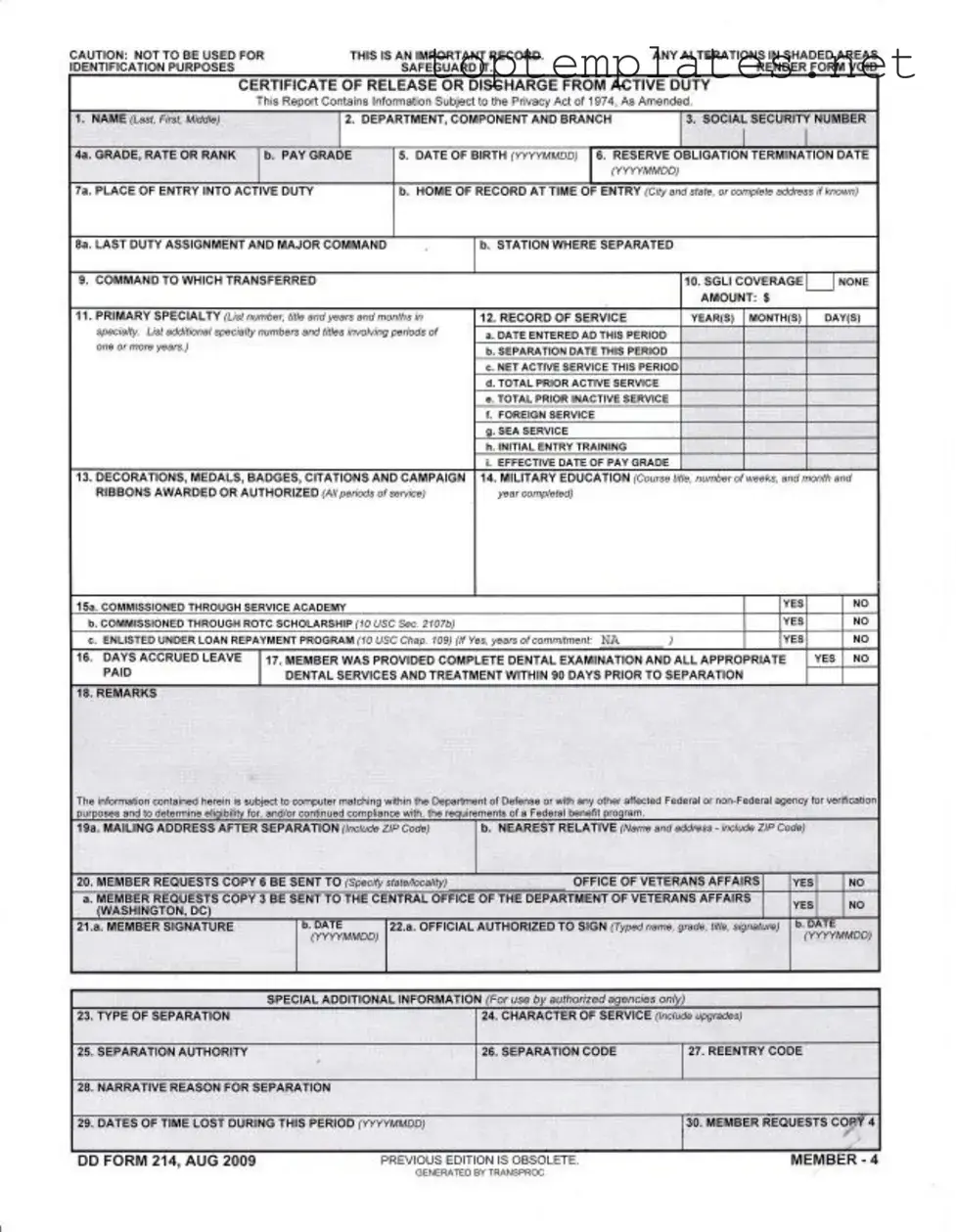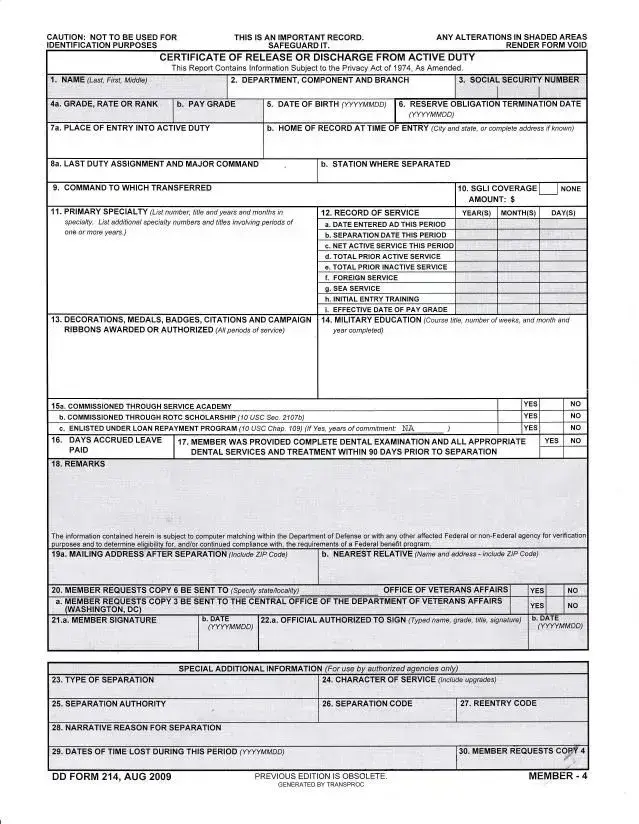What is a DD 214 form and why is it important?
The DD 214 form, officially called the Certificate of Release or Discharge from Active Duty, is a document issued by the Department of Defense when a service member retires or is discharged from active duty. It contains key information such as service dates, branch of service, rank, awards, and reason for discharge. This document is crucial for veterans as it's used to verify military service for employment, membership in veterans' organizations, and eligibility for veterans' benefits, among other things.
How can one obtain a copy of their DD 214?
Veterans can obtain a copy of their DD 214 by filing a request through the National Archives' National Personnel Records Center (NPRC) using Standard Form 180 (SF-180). Requests can be made online, by mail, or by fax. In some cases, veterans may also be able to obtain a copy through their state's veteran affairs office or through certain veterans' service organizations.
What should I do if I notice an error in my DD 214?
If an error is found on a DD 214, it's essential to get it corrected to ensure that records accurately reflect one's military service and entitlements. Corrections can be requested through the Board for Correction of Military Records of the respective service branch. The process usually involves submitting a form (DD Form 149) detailing the error and providing evidence to support the request for correction.
Can family members access a veteran's DD 214?
Family members may access a veteran's DD 214 for purposes such as filing for benefits, funeral arrangements, or research. Immediate next of kin, such as spouses, children, or parents, can request the document on behalf of a deceased veteran by using Standard Form 180 (SF-180) and providing proof of death. Other relatives or third parties may need the veteran's written consent or proof of death and status as a beneficiary to access the records.
Is the DD 214 used for identification purposes?
No, the DD 214 form should not be used for identification purposes. The form contains sensitive personal information, including the veteran's Social Security Number and service details, which could pose a risk for identity theft if misused. Veterans are advised to safeguard this document and only provide copies when absolutely necessary for verifying service or claiming benefits.

